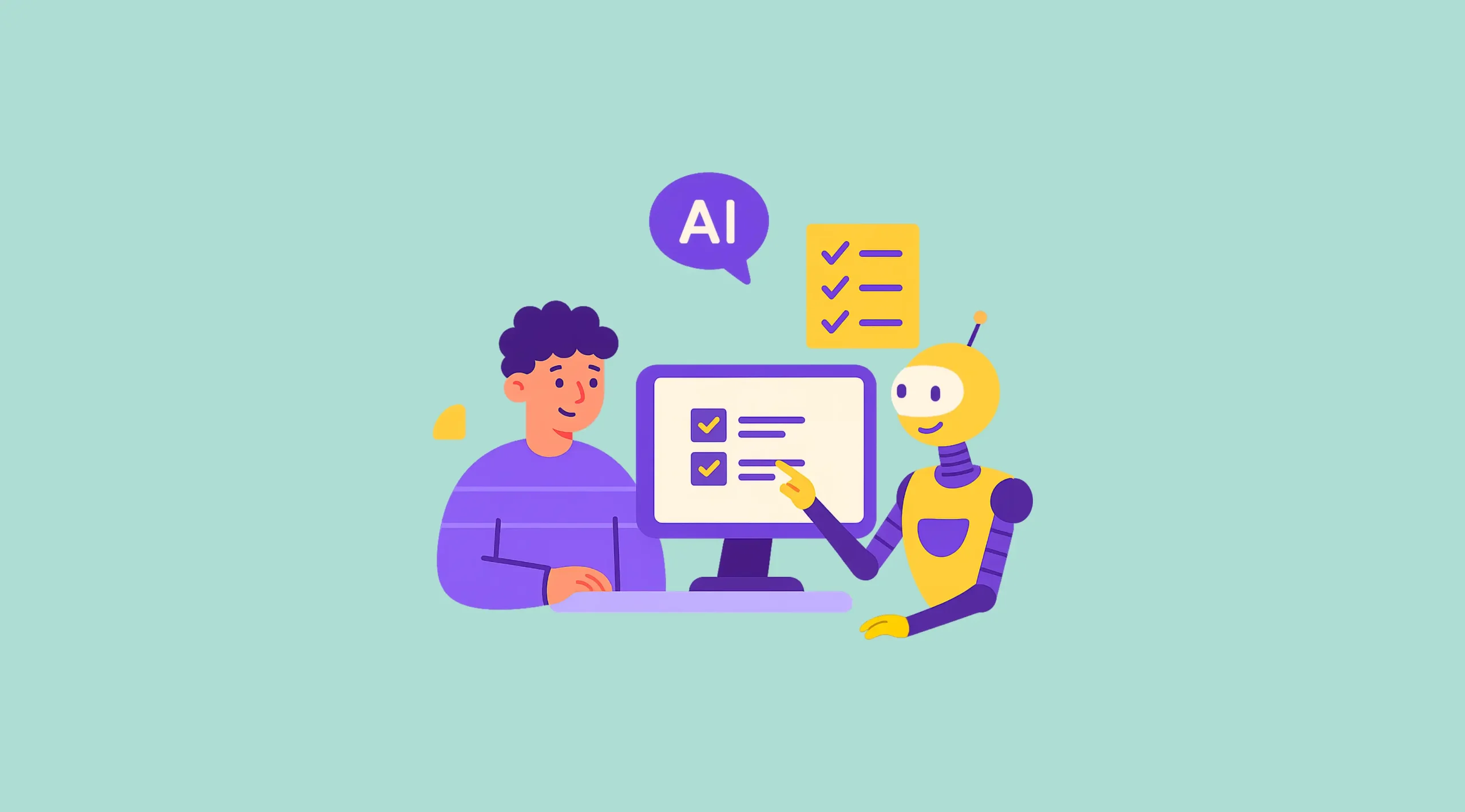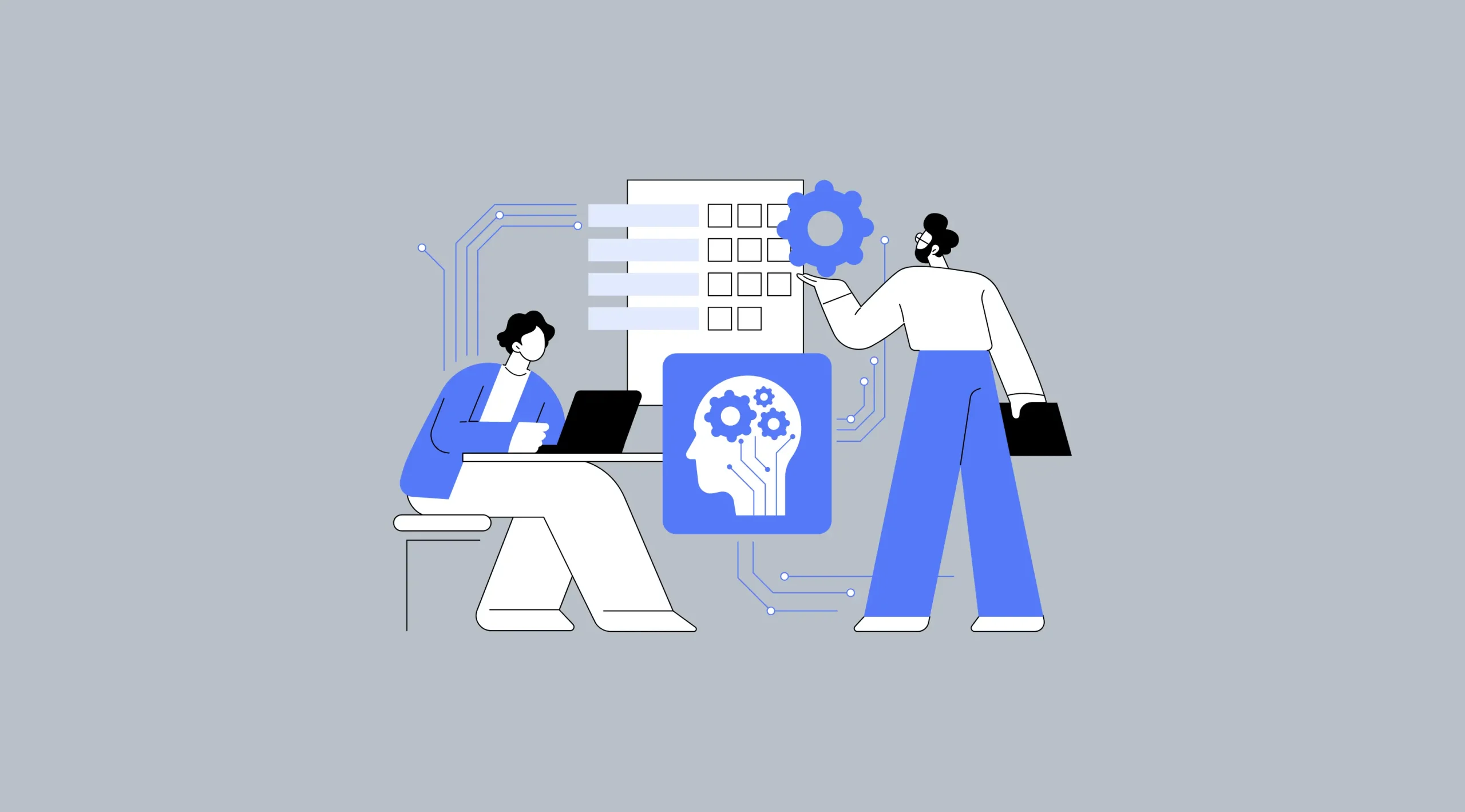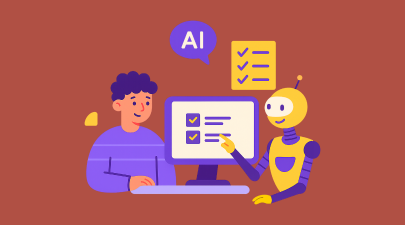Artificial intelligence has emerged as a defining force in retail, transforming how merchants operate, innovate, and connect with customers. The sector is undergoing rapid change, where AI for retail has shifted from being an optional enhancement to becoming essential for competitiveness. By analyzing massive datasets, predicting demand patterns, and enabling real-time decision-making, AI is reshaping both physical retail stores and digital commerce.
AI for Retail part 1 maps the journey from core concepts to high-impact applications across physical stores and eCommerce. It clarifies what AI for retail encompasses, then shows how these capabilities process large, messy datasets to reveal patterns, automate decisions, and adapt to shifting demand. Readers see the contrast between AI for retail stores and AI retail solutions online. The article outlines market momentum and the use cases retailers are funding now: demand forecasting, warehouse robotics, fraud detection, and generative AI for retail marketing. Benefits are tied to measurable outcomes: higher conversions and loyalty, lower stockouts and returns, faster fulfillment, and smarter spend on promotions. Furthermore, ethical guardrails are addressed to support trust at scale.
In part 2, we will discover real-world applications, covering leading AI retail solutions, case studies from global and regional retailers, and key challenges like integration, ethics, and workforce transformation. It also introduces the trends and roadmaps that will guide the future of AI-powered retail.
Table of Contents
General Understanding of AI for Retail Industry
From AI for retail stores using computer vision to AI retail solutions that power personalization in eCommerce, the technology helps merchants streamline operations, improve customer engagement, and drive growth.
What is AI for Retail Industry?
AI for retail refers to the application of artificial intelligence technologies—such as machine learning, computer vision, natural language processing, and predictive analytics—across the entire retail value chain. At its core, AI for retail enables businesses to process vast amounts of structured and unstructured data, identify meaningful patterns, and take automated or semi-automated actions that improve performance. Unlike traditional rule-based systems, AI tools for retail business learn continuously from new information, making them highly adaptive to the fast-changing dynamics of consumer markets.

The scope of AI for retail is broad, ranging from operational efficiency to customer engagement. In physical environments, AI for retail stores often involves solutions like cashierless checkout, shelf-monitoring robots, and video analytics for loss prevention. Online, AI retail solutions include recommendation engines, personalized promotions, sentiment analysis, and AI chatbots for customer service. Together, these technologies create a seamless ecosystem where merchants gain stronger visibility, faster response capabilities, and higher profitability.
A key differentiator lies in how AI supports offline versus online retail. In-store systems emphasize real-time monitoring, automation, and labor optimization, while digital platforms leverage AI for hyper-personalization, predictive pricing, and targeted marketing. The most successful retailers combine both to create an omnichannel strategy, demonstrating how can AI be used in retail to unify experiences across touchpoints.
Market Overview and Growth Potential
The AI for retail industry has experienced rapid expansion over the past decade. According to multiple market research reports, the global AI in retail market was valued in the tens of billions of U.S. dollars in 2023, with projections showing annual growth rates above 20% over the coming years. This explosive trajectory is fueled by rising investments in digital transformation, accelerated by the pandemic’s push toward eCommerce, and a competitive landscape where retailers can no longer rely on traditional methods alone.

In North America, AI adoption in retail leads the global market, with major investments from giants like Amazon, Walmart, and Target. Europe demonstrates steady growth, driven by demand for personalization and compliance-focused solutions. Meanwhile, Asia-Pacific has become the fastest-growing region, propelled by large-scale adoption of AI for retail stores in China, Japan, and India, and the integration of AI retail solutions within “new retail” models pioneered by Alibaba and other innovators.
Investment trends show retailers prioritizing AI retail solutions in areas such as demand forecasting, warehouse automation, fraud detection, and generative AI for retail marketing campaigns. Venture capital funding in AI tools for retail business continues to rise, supporting startups developing visual search engines, autonomous delivery systems, and conversational AI assistants. These investments highlight both the scalability and long-term value of AI for retail.
Benefits of AI in Retail
AI for retail offers a wide spectrum of benefits that directly address the challenges merchants face in today’s highly competitive environment.
- Enhancing Customer Experience
AI-powered personalization engines analyze browsing history, purchase behavior, and demographic data to tailor product recommendations. AI in retail examples include online marketplaces like Amazon or Zalora, where recommendation systems boost engagement and conversions. In physical stores, smart mirrors, AI kiosks, and voice assistants help customers make quicker decisions. Generative AI for retail also enhances digital catalogs by automatically creating product descriptions and marketing copy, providing customers with richer, more consistent information. - Optimizing Operations
Retailers face complex operational challenges, from managing stock to coordinating supply chains. AI for retail stores supports shelf scanning, real-time stock alerts, and theft detection, while predictive analytics forecast demand more accurately than traditional models. In warehouses, AI retail solutions streamline picking, packing, and routing, leading to faster delivery and lower costs. For managers, AI tools for retail business provide actionable dashboards and simulations, helping them plan with greater accuracy and speed. - Driving Revenue Growth
Ultimately, the most compelling reason for AI adoption lies in its impact on profitability. Dynamic pricing models adjust product prices instantly based on demand, competitor pricing, and inventory levels. Retailers using AI in this way capture more sales while protecting margins. Personalized promotions increase repeat purchases and customer loyalty, while fraud detection prevents revenue loss. Emerging AI retail trends, such as AI-driven loyalty programs and voice commerce, offer merchants new opportunities to grow their top line while staying ahead of competitors.
AI for retail is no longer just a technological experiment—it is an industry-wide transformation reshaping how merchants operate, compete, and thrive. With a growing market, expanding use cases, and measurable benefits, the adoption of AI for retail industry solutions marks a turning point in global commerce. The rest of this blog will explore AI in retail examples, the latest AI retail trends, and detailed guidance on how can AI be used in retail to deliver both operational efficiency and customer delight.
Generative AI for Retail
Generative AI for retail is changing how merchants create and deliver content, moving beyond analysis to active production of text, images, and experiences. From automated product descriptions to AI-driven ad creatives and virtual try-ons, generative AI opens new ways for retailers to scale creativity, reduce costs, and engage customers more effectively.
What is Generative AI in Retail?
Generative AI for retail refers to the use of artificial intelligence systems that create new content—such as text, images, video, or even 3D assets—based on large datasets and advanced learning models. Unlike traditional AI for retail solutions, which primarily classify, predict, or recommend based on existing data, generative AI builds entirely new outputs. This distinction is critical because it shifts the role of AI from being purely analytical to also being creative.

The technologies powering generative AI for retail include large language models (LLMs) like GPT, which can generate natural product descriptions or customer support scripts; diffusion models, which create high-quality product images and ad visuals; and multimodal systems, which combine text, image, and video generation for immersive retail experiences. For the AI for retail industry, these technologies represent a major leap, enabling merchants to scale creative tasks that once required significant human resources.
Compared to predictive AI, which focuses on anticipating outcomes—such as forecasting demand or predicting customer churn—generative AI actively produces new assets. In practice, predictive AI answers “what is likely to happen,” while generative AI answers “what can be created.” Both are essential components of AI for retail, but generative AI opens novel opportunities that extend beyond operational efficiency into brand identity, content creation, and customer engagement.
Applications of Generative AI for Retail
- Automated Product Descriptions and Catalog Creation
One of the most time-consuming tasks in retail is writing unique, SEO-friendly product descriptions. Generative AI for retail automates this process, producing consistent, brand-aligned text for thousands of items in a catalog. Large retailers already use AI tools for retail business to generate detailed descriptions that include product specifications, usage suggestions, and persuasive calls to action. For retail stores that constantly update inventory, this automation ensures faster product launches and better discoverability in search engines. - AI-Generated Ad Creatives and Marketing Campaigns
Marketing requires constant creative production, from banner ads and social media visuals to full campaign concepts. Generative AI for retail can design ad creatives in seconds, tailored to specific demographics, seasons, or even cultural contexts. For example, AI in retail examples show brands using generative AI to A/B test dozens of ad variations simultaneously, identifying which visuals or copy resonate best. This allows merchants to stretch marketing budgets further and adapt campaigns in real time, aligning with the latest AI retail trends. - Virtual Try-Ons and AR Experiences
A growing frontier of generative AI for retail lies in augmented reality (AR) and virtual try-on experiences. Fashion and beauty retailers are increasingly adopting systems that let customers see how a product looks on them virtually. Powered by generative AI models, these experiences create realistic overlays for clothing, makeup, or accessories, reducing return rates and boosting confidence in purchase decisions. For retail stores, this bridges the gap between physical and digital shopping, giving customers the convenience of online buying with the confidence of in-store testing.
Ethical Considerations
- Deepfakes and Authenticity Concerns
While generative AI for retail unlocks creativity, it also raises risks. AI-generated models, images, or videos can blur the line between authentic and synthetic content. Retailers must carefully manage how AI content is disclosed to avoid misleading customers. The AI for retail industry faces increasing pressure to set standards around authenticity, especially when showcasing virtual models or creating synthetic influencer content. - Transparency and Bias in AI-Generated Content
Another challenge lies in transparency and fairness. Generative AI systems reflect the data they are trained on, which can unintentionally introduce biases. For example, AI-generated fashion catalogs might overrepresent certain body types or demographics. Merchants adopting AI retail solutions must invest in ethical guardrails—ensuring AI tools for retail business promote diversity, inclusivity, and accurate representation. Clear disclosure when content is AI-generated is also critical to building consumer trust.
Generative AI for retail is redefining how can AI be used in retail by extending its role from analysis and prediction to creativity and engagement. From automated catalog generation to immersive AR experiences, it provides practical, scalable ways for retailers to differentiate themselves in a crowded marketplace. Yet, like all powerful technologies, it comes with ethical responsibilities. By balancing innovation with transparency, the AI for retail industry can unlock the full potential of generative AI while safeguarding authenticity and customer trust.
How Can AI Be Used in Retail?
The retail sector has always been driven by efficiency, customer satisfaction, and the ability to adapt to market changes. With the rise of digital commerce and new consumer expectations, AI for retail has become a central force in helping merchants balance operational excellence with personalized engagement. Unlike earlier technologies that simply digitized existing processes, AI for retail provides retailers with advanced capabilities such as predictive analytics, computer vision, and natural language processing that transform the way businesses operate. From AI for retail stores that automate shelf management to AI retail solutions in eCommerce that deliver personalized recommendations, AI is proving to be the most versatile tool for modern merchants. Understanding how can AI be used in retail is not just about technology adoption—it is about redefining the future of retail operations and strategy.
Revenue Growth and Profitability
One of the strongest motivations for adopting AI for retail is its proven ability to drive revenue growth and improve profitability. In an industry where margins are often razor-thin, merchants need smarter ways to capture value without alienating customers. AI retail solutions are providing exactly that, equipping businesses with tools that can dynamically adjust prices, recommend complementary products, and identify new opportunities for revenue optimization. By implementing AI tools for retail business, merchants are not only responding to market pressures but also creating long-term competitive advantages.
Dynamic Pricing Optimization
Traditional pricing strategies in retail relied on historical data, seasonal patterns, and occasional competitor checks. Today, AI for retail enables a much more agile approach known as dynamic pricing optimization. Using machine learning and predictive analytics, AI adjusts prices in real time by evaluating factors such as customer demand, competitor pricing, inventory levels, and even external variables like weather or local events.

For example, AI in retail examples include global eCommerce platforms that change product prices multiple times a day to reflect real-time conditions. In AI for retail stores, this may involve digital shelf labels connected to central AI systems, automatically updating prices across hundreds of locations simultaneously. By doing so, retailers can ensure they remain competitive while also protecting margins.
Dynamic pricing powered by AI retail solutions helps merchants maximize profitability during peak demand while preventing losses when sales slow down. Instead of discounting broadly, retailers can use AI to tailor price drops only where necessary, ensuring promotions are targeted and cost-effective. This shift aligns with current AI retail trends, where businesses move from intuition-driven strategies to fully data-driven pricing models.
Upselling and Cross-Selling
Beyond pricing, AI for retail also fuels growth through smarter upselling and cross-selling strategies. By analyzing shopping behavior, browsing history, and purchase patterns, AI tools for retail business generate precise product bundling suggestions. These might include recommending accessories with electronics, offering matching items in fashion, or bundling complementary groceries in supermarkets.

Upselling and cross-selling powered by AI for retail benefit merchants in two key ways. First, they increase the average order value by encouraging customers to buy more than their initial intent. Second, they raise conversion rates by showing customers highly relevant product combinations, reducing decision fatigue and improving shopping satisfaction.
In retail examples from both online and offline contexts, AI recommendation engines have boosted basket size significantly. For eCommerce, AI retail solutions suggest additional items during checkout, while in AI for retail stores, sales associates equipped with AI-driven tools can offer personalized recommendations on the spot. Generative AI for retail further enhances this capability by creating tailored product descriptions or promotional messages that highlight why certain items work well together, making upselling more persuasive and effective.
Operational Efficiency
Retail is an industry where efficiency determines survival. With complex inventory networks, rising logistics costs, and an ever-growing risk of fraud, merchants must streamline every operational layer to stay competitive. AI for retail has emerged as the most effective way to achieve this, giving businesses intelligent tools to forecast demand, manage supply chains, and detect fraudulent activity in real time. By leveraging AI retail solutions, retailers can reduce waste, optimize resources, and protect profits—all while ensuring that customer needs are met quickly and reliably.
Inventory Management and Demand Forecasting
Managing inventory is one of the most difficult tasks for retailers, especially as consumer demand fluctuates across seasons, geographies, and sales channels. Overstocking ties up capital and increases carrying costs, while stockouts frustrate customers and lead to lost sales. AI for retail provides predictive analytics that forecast demand with far greater accuracy than traditional models.

By analyzing historical sales data, promotions, customer behavior, and external factors such as weather or local events, AI tools for retail business anticipate stock needs weeks or even months in advance. In AI for retail stores, this means shelves are stocked with the right products at the right time. For eCommerce, AI-powered algorithms dynamically update online catalogs to reflect real-time availability, minimizing the risk of order cancellations.
The result is reduced holding costs, optimized cash flow, and a smoother customer experience. AI in retail examples from companies like Walmart and Zara show how predictive demand forecasting prevents both surplus and shortages, enabling merchants to align operational efficiency with profitability.
Supply Chain Optimization
The complexity of modern supply chains often makes logistics one of the biggest expenses for retailers. AI for retail addresses this challenge by improving visibility, routing, and warehouse operations. Using advanced algorithms, AI retail solutions analyze traffic patterns, delivery schedules, and order data to optimize routes, cutting delivery times and lowering transportation costs.

In warehouses, AI-powered robotics and computer vision automate picking, packing, and inventory checks, reducing labor requirements and human error. For AI for retail stores with hybrid operations—both offline and online—AI systems help balance distribution across physical outlets and digital channels. This ensures that products are always available where demand is highest, a critical factor in omnichannel retail strategies.
Global leaders in the retail industry are already deploying these technologies. Amazon, for instance, integrates AI with robotics in its fulfillment centers, while regional players adopt AI retail solutions for smarter last-mile delivery. As AI retail trends evolve, supply chain optimization is becoming less about cost-cutting and more about building resilience and agility.
Fraud Detection and Risk Management
Fraud remains one of the largest risks in retail, particularly as digital payments and online transactions increase. Chargebacks, account takeovers, and fake returns can quickly erode profits. AI for retail offers advanced fraud detection systems that identify suspicious transactions in real time. By analyzing purchase history, user behavior, device fingerprints, and payment patterns, AI tools for retail business flag anomalies that human monitoring might miss.

In eCommerce, this means preventing stolen credit card use or fraudulent account activities. In AI for retail stores, AI-powered surveillance and POS monitoring detect unusual behavior at checkout counters or self-service kiosks. AI in retail examples from global payment providers highlight how machine learning models have reduced false positives while catching more genuine threats.
This dual capability—accuracy and speed—protects merchants from financial losses while ensuring legitimate customers do not face unnecessary friction. Fraud detection is no longer reactive; with AI for retail, it is proactive and predictive, allowing businesses to secure revenue streams more effectively.
Marketing and Customer Insights
Marketing has always been about understanding customers and delivering the right message at the right time. However, the complexity of modern consumer behavior—spanning offline interactions, online browsing, and multichannel purchases—makes this increasingly difficult without advanced technology. AI for retail bridges this gap by giving merchants the ability to capture, process, and interpret massive amounts of customer data. With AI retail solutions, businesses can design highly targeted campaigns, predict long-term customer value, and refine strategies in ways that traditional methods cannot match. This capability is one of the most significant answers to the question of how can AI be used in retail, as it directly links data intelligence to revenue growth and loyalty.
Data-Driven Campaigns
One of the clearest advantages of AI for retail is its power to create smarter, data-driven marketing campaigns. Instead of relying on broad demographic categories, AI tools for retail business segment audiences based on real behaviors, purchase histories, browsing patterns, and even contextual signals like time of day or weather.

For example, AI in retail examples include fashion retailers using AI algorithms to recommend seasonal collections to customers who have purchased similar styles before, or grocery chains tailoring promotions based on local buying patterns. By aligning campaigns with actual consumer intent, AI retail solutions ensure that messages resonate more strongly with the target audience.
This precision translates into higher return on investment (ROI). Merchants spend less money on wasted advertising, as AI minimizes irrelevant impressions and focuses resources on the most promising customer segments. Generative AI for retail further enhances campaigns by automatically creating ad variations, product descriptions, or personalized email content, enabling businesses to test and refine their messaging at scale. These practices reflect emerging AI retail trends, where marketing efficiency and personalization are tightly linked.
Customer Lifetime Value (CLV) Prediction
Another critical area where AI for retail delivers value is in predicting customer lifetime value. Not all shoppers contribute equally to revenue, and identifying high-value customers allows merchants to prioritize retention efforts effectively. AI models analyze factors such as purchase frequency, average spend, engagement with promotions, and churn risk to calculate the potential long-term contribution of each customer.

In retail stores, this may guide loyalty program design by offering premium rewards to customers who consistently generate higher profits. In eCommerce, AI-powered dashboards help businesses decide which customers should receive exclusive promotions, early product access, or personalized discounts. By directing resources toward high-value shoppers, merchants maximize retention and minimize the cost of customer acquisition.
AI in retail examples demonstrate that focusing on CLV-driven strategies often increases repeat purchases and brand loyalty. For instance, subscription-based retailers use AI retail solutions to identify customers likely to churn and deploy targeted campaigns to re-engage them before they leave. Similarly, generative AI for retail can craft personalized loyalty offers, making communications feel more relevant and improving retention outcomes.
Workforce Productivity
Retail is an industry where human resources are both one of the greatest assets and one of the most significant costs. Staff productivity directly influences customer satisfaction, store performance, and overall profitability. However, managing a large and often diverse workforce presents challenges, from scheduling to training to strategic decision-making. AI for retail is addressing these issues by introducing tools that automate routine tasks and empower managers with advanced decision-making capabilities. By leveraging AI retail solutions, businesses can reduce inefficiencies, minimize errors, and allow staff to dedicate more time to customer-facing activities that build loyalty and drive sales.
Automated Routine Tasks
One of the most immediate applications of AI for retail lies in the automation of routine administrative tasks. Traditional workforce management requires hours of manual scheduling, payroll processing, and compliance checks—activities that consume valuable time without directly contributing to customer experience. With AI tools for retail business, these tasks can be automated through intelligent scheduling systems, chatbot-driven HR assistants, and algorithm-based payroll platforms.

For instance, AI scheduling platforms analyze historical foot traffic, seasonal demand, and employee availability to create optimized staff rosters. This ensures that retail stores are never under- or over-staffed, improving efficiency while reducing labor costs. Payroll support systems powered by AI reduce errors in wage calculation, overtime tracking, and benefits management, providing both transparency for staff and consistency for management.
By freeing employees from administrative burdens, AI for retail allows them to focus on higher-value work, such as sales engagement, upselling, and customer care. In retail stores, associates equipped with AI-driven mobile apps can immediately check product availability, make personalized recommendations, or manage loyalty program inquiries, improving the quality of every customer interaction. This shift illustrates how can AI be used in retail to enhance not just operational efficiency, but also employee satisfaction and customer experience simultaneously.
Decision Support for Managers
Retail managers are constantly faced with complex decisions that directly impact profitability: how to price products, how much stock to order, which employees to schedule during peak hours, and how to allocate marketing budgets. Historically, these decisions were made using limited data and experience-driven intuition, leaving room for human error. AI for retail has transformed this process by introducing predictive analytics dashboards and simulation models that support managers in making smarter, evidence-based decisions.

AI retail solutions provide managers with real-time insights into sales performance, customer traffic, and supply chain conditions. For example, dashboards powered by AI can predict demand surges, guiding managers on when to increase stock or launch targeted promotions. Similarly, AI-driven workforce planning tools can recommend hiring strategies based on projected sales trends and seasonal fluctuations. This not only reduces the likelihood of costly mistakes but also ensures that business strategies remain agile in rapidly changing markets.
In retail examples, companies are adopting AI-powered decision support systems to test multiple pricing scenarios or simulate the financial impact of different stocking levels. These tools empower managers to evaluate outcomes before committing to a strategy, reducing risks and maximizing profitability. As generative AI for retail becomes more advanced, it will even be able to draft tailored management reports or suggest strategic options automatically, further enhancing managerial efficiency.
Omnichannel and Hybrid Benefits
Modern retail is no longer defined by a single channel. Customers expect to move seamlessly between online and offline touchpoints, whether they are browsing products on a website, checking inventory at a nearby store, or completing purchases through mobile apps. This shift has placed enormous pressure on merchants to create consistent, integrated shopping journeys. AI for retail is central to meeting this demand, offering advanced tools that unify data, eliminate inefficiencies, and deliver personalized experiences across all platforms. By adopting AI retail solutions designed for omnichannel operations, businesses gain both operational stability and stronger customer loyalty.
Unified Retail Experience
One of the most powerful applications of AI for retail is the creation of a unified retail experience. Traditionally, online and offline operations often functioned in silos, leading to mismatched pricing, fragmented promotions, and inconsistent inventory visibility. Customers frequently encountered frustration when items advertised online were unavailable in stores, or when loyalty points applied in one channel did not carry over to another.

AI solves this by synchronizing data across all systems in real time. With AI tools for retail business, product availability, pricing adjustments, and promotional offers are updated simultaneously across eCommerce sites, physical stores, and mobile platforms. For example, AI in retail examples include global fashion brands that leverage AI-driven inventory tracking to allow customers to check in-store availability online, reserve items digitally, and complete the purchase in person.
By eliminating inconsistencies, AI for retail ensures that merchants avoid lost sales and customer dissatisfaction. It also improves operational efficiency: managers can see a holistic view of stock levels, sales performance, and customer activity across all channels, empowering better decision-making. As AI retail trends evolve, the focus is shifting toward predictive synchronization—anticipating where demand will surge and proactively balancing inventory across digital and physical stores before mismatches occur.
Loyalty Program Optimization
Customer loyalty has always been a cornerstone of successful retail, but traditional programs often rely on generic point systems or blanket discounts that fail to build genuine engagement. AI for retail transforms loyalty programs by uncovering deep patterns in purchase behavior and customer preferences. By analyzing data from online and offline transactions, browsing histories, and demographic factors, AI retail solutions can design rewards that feel personal, timely, and relevant.

For example, AI can identify customers who frequently purchase seasonal products and offer them exclusive early access promotions, or detect high-value shoppers who may be at risk of churn and provide targeted retention incentives. These AI tools for retail business allow merchants to spend more strategically on loyalty rewards—focusing resources on segments most likely to generate long-term value.
Generative AI for retail adds another layer by automating the creation of personalized messages, promotional emails, or even custom offers within apps. Instead of one-size-fits-all campaigns, retailers can deliver unique, AI-generated content that resonates with each shopper. This leads to higher engagement rates, stronger brand affinity, and increased repeat sales.
In practice, AI in retail examples include supermarkets that analyze household buying patterns to offer family-focused discounts, or online marketplaces that suggest membership perks aligned with an individual’s shopping categories. These applications demonstrate how can AI be used in retail not only to retain customers but also to transform loyalty into a true driver of revenue growth.
AI for Retail Stores (Offline Applications)
While much of the conversation about digital transformation focuses on eCommerce, offline retail remains a critical component of the global retail industry. Physical stores continue to drive a large percentage of sales, serve as brand touchpoints, and offer experiences that online channels cannot fully replicate. However, traditional brick-and-mortar stores also face unique challenges—such as high operating costs, labor shortages, inventory inefficiencies, and theft prevention. AI for retail is reshaping how offline stores operate, providing innovative solutions that optimize store layouts, enhance the shopping journey, empower employees, and protect assets. The integration of AI retail solutions into physical spaces illustrates how can AI be used in retail to build smarter, more profitable, and customer-centric stores.
Smart Store Layouts
Physical retail spaces remain essential in the shopping journey, but traditional store layouts often fail to capture the full potential of customer engagement and sales optimization. Many merchants struggle to identify the most effective product placement strategies, resulting in lost opportunities and inefficient use of valuable floor space. AI for retail addresses this challenge with tools that analyze in-store behavior, automate shelf management, and continuously refine layouts to align with consumer demand. Smart store layouts powered by AI retail solutions allow retailers to transform their offline stores into dynamic environments that maximize profitability while enhancing the customer experience.
Heatmaps and Foot Traffic Analytics
Heatmaps generated by AI-powered cameras and sensors provide merchants with real-time insights into how shoppers move through a store. By tracking foot traffic patterns, AI for retail identifies which areas attract the most attention and which sections remain underutilized. This data-driven visibility enables managers to optimize product placement, highlight promotional displays, and redesign layouts to guide customers toward high-value sections of the store.

AI in retail examples include fashion retailers using AI heatmaps to determine which collections generate the most interest, then relocating complementary products nearby to encourage cross-selling. Supermarkets employ AI retail solutions to analyze checkout line congestion, allowing them to adjust counter placement or deploy additional staff during peak hours. These insights ensure that stores are not only more efficient but also more enjoyable for customers, reducing frustration and increasing overall satisfaction.
In the broader retail industry, foot traffic analytics are becoming standard practice for physical store optimization. As AI retail trends continue to evolve, predictive models are being introduced to forecast where customer attention will likely shift next—allowing merchants to redesign store flows proactively rather than reactively.
Shelf-Scanning Robots
Stock availability is one of the most critical factors in offline retail success, yet manual shelf checks remain time-consuming and prone to error. AI for retail introduces shelf-scanning robots that autonomously patrol aisles, monitoring stock levels, misplaced products, and labeling accuracy. These robots use computer vision and AI algorithms to detect empty shelves, price mismatches, or incorrect planogram compliance in real time.

For retail stores, this automation drastically reduces the labor burden of routine inspections while ensuring shelves are always replenished with the right products. Merchants benefit from lower operational costs, faster restocking, and fewer lost sales due to stockouts. Customers also gain from a smoother experience, as the products they want are consistently available and correctly priced.
AI in retail examples include large supermarket chains deploying shelf-scanning robots to capture millions of data points daily, feeding into centralized AI tools for retail business. This data not only informs restocking schedules but also contributes to demand forecasting models, further strengthening operational efficiency. As generative AI for retail advances, it may even provide automated reporting and insights, summarizing shelf performance for managers and suggesting corrective actions instantly.
Computer Vision in Physical Stores
Computer vision has become one of the most transformative technologies in the evolution of offline shopping. By enabling machines to “see” and interpret real-world environments, computer vision allows retailers to automate processes that once relied heavily on manual labor. AI for retail applies computer vision to physical stores in ways that improve convenience, reduce operational costs, and enhance security. From frictionless automated checkout systems to advanced loss prevention tools, this technology is reshaping how merchants operate brick-and-mortar stores and how customers experience them.
Automated Checkout (Amazon Go-Style)
Perhaps the most well-known application of computer vision in AI for retail stores is the development of cashierless checkout. Amazon Go pioneered this approach, where a combination of cameras, sensors, and AI algorithms automatically detects which products customers pick up and charges them when they leave the store. No cashiers, no checkout lines, and no manual scanning are required.

The benefits for merchants are significant. Automated checkout reduces labor costs, eliminates bottlenecks at payment counters, and increases throughput during peak hours. Customers enjoy a seamless experience, moving in and out of the store quickly, which often leads to increased loyalty and higher transaction volumes.
Beyond Amazon, AI in retail examples show that other global retailers are experimenting with similar AI retail solutions. Supermarkets, convenience stores, and even apparel outlets are piloting systems where AI tools for retail business manage real-time cart recognition and payment processing. As AI retail trends progress, more mid-sized retailers will gain access to affordable versions of cashierless technology, bringing this once futuristic concept into mainstream retail.
Loss Prevention and Theft Detection
Shrinkage, whether from theft, fraud, or operational errors, has long been a major challenge for physical retailers. Traditional surveillance methods rely on human monitoring, which is limited in scale and accuracy. AI for retail brings a new level of intelligence to loss prevention through computer vision systems that automatically analyze in-store video feeds and detect suspicious activity.

These AI retail solutions can identify behaviors such as concealment of items, abnormal movement patterns, or attempts to bypass payment areas. Unlike static cameras, AI tools for retail business actively learn over time, improving accuracy and reducing false positives. Alerts are sent in real time to store staff or security teams, allowing for rapid intervention without disrupting the overall shopping experience.
In AI for retail stores, loss prevention technologies go beyond theft detection. They can also spot pricing errors, misplaced inventory, or even employee mistakes at checkout counters. This not only reduces financial losses but also improves compliance with store operations. AI in retail examples from global chains demonstrate reductions in shrinkage by double-digit percentages after deploying AI-powered surveillance, proving the technology’s value for profitability.
AI in In-Store Customer Experience
While online platforms have revolutionized personalization and convenience, physical retail stores remain central to the shopping journey because they offer something digital commerce cannot: direct human interaction, tactile experiences, and instant gratification. However, traditional in-store experiences often lack the level of personalization and engagement customers have come to expect from digital channels. AI for retail bridges this gap by embedding intelligent technologies directly into physical environments. Tools such as smart mirrors, virtual fitting rooms, and voice-activated kiosks transform stores into interactive spaces where technology enhances service rather than replacing it. These innovations show how can AI be used in retail to modernize offline shopping, delivering experiences that are engaging, efficient, and deeply personalized.
Smart Mirrors & Virtual Fitting Rooms
One of the most compelling applications of AI for retail stores is the introduction of smart mirrors and virtual fitting rooms. Powered by computer vision and AI-driven augmented reality, these devices allow customers to try on clothing or accessories virtually without physically changing garments. By simply standing in front of a mirror or using a digital screen, shoppers can see how different outfits, colors, or styles look on them in real time.

For merchants, this technology addresses several challenges. It reduces fitting room congestion, minimizes product damage from excessive try-ons, and lowers return rates by giving customers a clearer sense of how items will look. AI retail solutions embedded in these systems also capture valuable data on customer preferences, recording which items are tried on most frequently and which combinations generate the most interest. This data can be fed back into AI tools for retail business to inform inventory planning, merchandising strategies, and marketing campaigns.
AI in retail examples include global fashion brands and department stores that have deployed smart mirrors, enabling shoppers to mix and match outfits digitally, receive personalized recommendations, and even share virtual looks with friends via social media. As generative AI for retail advances, these systems are beginning to create fully customized styling suggestions, offering complete outfits curated to an individual shopper’s taste and purchase history. This integration of creativity and data exemplifies how AI for retail enhances both customer satisfaction and operational insight.
Voice-Activated Kiosks and Assistants
Another innovation reshaping offline retail is the use of voice-activated kiosks and AI-powered assistants within stores. Similar to smart speakers at home, these systems allow customers to ask questions, locate products, check prices, or receive personalized recommendations through natural language interactions. Instead of searching through aisles or waiting for staff, shoppers can engage directly with an AI assistant to get instant support.

For retail stores, this reduces pressure on staff while still ensuring that customers receive timely assistance. Voice-activated kiosks can handle repetitive inquiries such as “Where is this product located?” or “Do you have this size in stock?”, freeing employees to focus on higher-value tasks like personalized sales consultations or complex service requests.
AI retail solutions powering these kiosks also learn over time, refining their responses based on customer interactions and local store data. They can recommend upselling opportunities—such as suggesting accessories with apparel—or direct customers to promotional offers. In AI in retail examples, supermarkets have adopted voice kiosks that assist customers in finding products faster, while electronics retailers use AI-driven assistants to explain product features in detail.
From the merchant’s perspective, these kiosks not only improve efficiency but also collect insights into frequently asked questions, popular product searches, and emerging customer needs. This information feeds into broader AI retail trends of data-driven decision-making and personalization, ensuring that stores remain aligned with customer expectations.
Retail Staff Empowerment
Retail success has always depended on the people working on the store floor. Staff members play a critical role in creating memorable shopping experiences, assisting customers, and ensuring operations run smoothly. Yet, managing employees in traditional retail environments often comes with challenges: unpredictable scheduling, uneven workloads, and limited access to data-driven insights. AI for retail is helping merchants address these issues by introducing tools that empower employees rather than replace them. With AI-powered workforce scheduling and augmented decision-making systems, staff become more efficient, more engaged, and better equipped to deliver superior customer service. These innovations illustrate how can AI be used in retail to elevate the human workforce while ensuring offline stores operate at peak performance.
AI-Powered Workforce Scheduling
Scheduling is one of the most time-consuming and complicated aspects of retail management. Traditional approaches rely on manual planning, manager intuition, or outdated scheduling software that often fails to match staff availability with customer demand. AI for retail brings intelligence to this process by analyzing a wide range of variables—historical sales, seasonal trends, local events, and even weather patterns—to predict staffing needs with high accuracy.

With AI retail solutions, merchants can automatically generate optimal staff schedules that align labor availability with anticipated store traffic. Employees benefit from more consistent shifts, reduced last-minute changes, and fairer distribution of hours, while businesses reduce the risk of being under- or overstaffed. For example, AI in retail examples show large supermarket chains adopting AI scheduling tools that cut labor costs while simultaneously improving service levels during peak shopping times.
These AI tools for retail business also enhance flexibility by enabling employees to trade shifts through mobile apps, guided by AI systems that ensure coverage remains balanced. In the broader AI for retail industry, workforce scheduling powered by AI represents one of the clearest cases where automation drives both employee satisfaction and operational efficiency.
Augmented Decision-Making for Sales Associates
Sales associates are often the face of a retail brand, but without access to the right information, their ability to support customers is limited. AI for retail is changing this by equipping store staff with augmented decision-making tools. Through mobile apps, smart tablets, or wearable devices, employees gain real-time insights into product availability, customer purchase history, and personalized recommendations.

For instance, an associate in a fashion store can use AI retail solutions to instantly check whether a particular item is in stock, suggest alternatives if it is unavailable, or even recommend complementary products that align with the customer’s past purchases. This transforms staff interactions from basic assistance into tailored consultations, strengthening customer trust and loyalty.
Generative AI for retail further amplifies this capability by creating dynamic sales scripts or personalized offers on the spot, helping associates deliver consistent yet customized messaging. AI in retail examples include electronics retailers where staff use AI-driven tools to compare product specifications instantly, guiding customers toward informed purchasing decisions.
By supporting employees with intelligence rather than replacing them, AI for retail empowers staff to focus on relationship building and upselling opportunities. The result is higher employee confidence, improved customer satisfaction, and stronger sales performance.
AI for eCommerce and Online Retail
While physical stores continue to play an important role in the shopping journey, the rapid rise of digital commerce has shifted much of the competitive landscape online. Consumers expect fast, seamless, and personalized experiences across websites, mobile apps, and digital marketplaces. Meeting these expectations is increasingly complex, as retailers must manage enormous volumes of data, respond to dynamic customer behavior, and maintain operational efficiency in highly competitive environments. AI for retail has become the driving force behind this transformation, equipping businesses with tools to personalize experiences, streamline operations, and boost sales in the digital world.
AI for eCommerce is not simply about adding automation—it is about creating smarter systems that continuously learn from customer interactions. Every click, search query, and transaction provides valuable data that AI for retail can analyze in real time to predict needs and deliver tailored responses. From recommendation engines and intelligent search systems to dynamic pricing and AI-powered customer service, online retail is being redefined by AI retail solutions. This section explores the many dimensions of how can AI be used in retail online, showing how digital-first strategies are reshaping the retail industry.
Personalized Shopping Experiences
Personalization has become one of the defining features of successful digital commerce. Shoppers no longer want to sift through endless product listings; instead, they expect retailers to anticipate their needs and present them with the most relevant choices instantly.

AI for retail is the engine that makes this possible, using massive amounts of customer data to deliver individualized recommendations and communications that feel tailored to each person. By embedding AI retail solutions into websites, apps, and marketing channels, merchants create personalized journeys that not only improve customer satisfaction but also increase conversion rates and long-term loyalty.
Recommendation Engines
Recommendation engines represent one of the most powerful applications of AI for retail in online environments. These systems analyze a shopper’s browsing behavior, purchase history, search queries, and even contextual factors such as location or time of day. By combining collaborative filtering, content-based filtering, and deep learning models, AI for retail predicts what products a customer is most likely to buy next.

AI in retail examples from global giants like Amazon and Alibaba show how recommendation engines generate a significant percentage of total revenue by increasing basket size and repeat purchases. Smaller eCommerce stores can also leverage accessible AI tools for retail business, integrating plugins or third-party platforms that bring recommendation capabilities to their digital storefronts.
The impact is twofold: customers enjoy a more efficient shopping experience because they see products aligned with their preferences, and merchants gain higher sales with reduced marketing costs. In the broader retail industry, recommendation engines are considered one of the clearest demonstrations of how can AI be used in retail to simultaneously enhance user experience and profitability.
Hyper-Personalized Email and Product Suggestions
Beyond the storefront itself, AI for retail extends personalization into direct communications such as email marketing, push notifications, and in-app product suggestions. Hyper-personalized campaigns go far beyond simply using a customer’s name in an email. AI retail solutions analyze individual purchase cycles, browsing history, engagement with previous campaigns, and demographic data to craft highly targeted messages.

For instance, AI can determine that a customer who frequently buys sportswear is most responsive to weekend promotions and send tailored emails showcasing new arrivals in activewear every Friday afternoon. Similarly, AI-generated product suggestions can highlight accessories that complement recent purchases, increasing the likelihood of upselling and cross-selling. Generative AI for retail further enhances these campaigns by automatically writing subject lines, creating promotional content, and even designing visuals optimized for specific audience segments.
The result is communication that feels timely, relevant, and personal. Customers receive fewer irrelevant messages, leading to higher open rates, click-through rates, and conversions. For merchants, hyper-personalized outreach maximizes marketing ROI and builds stronger customer relationships. In retail examples across industries, from fashion eCommerce to grocery delivery apps, personalized messaging has been shown to significantly boost retention and repeat sales.
AI in Search and Navigation
One of the biggest challenges in online retail is helping customers find exactly what they are looking for as quickly and seamlessly as possible. Traditional keyword-based search engines often struggle with ambiguous queries, spelling errors, or vague customer intent. As a result, many potential sales are lost simply because shoppers cannot easily locate the right product. AI for retail addresses this issue by enhancing search and navigation capabilities with intelligent, intuitive systems that go far beyond basic keyword matching. Through innovations such as visual search and conversational AI, online retailers can transform product discovery into a smoother, faster, and more engaging experience. These AI retail solutions are becoming essential tools in the broader AI for retail industry, ensuring that merchants reduce friction in the customer journey and capture more conversions.
Visual Search (Upload an Image, Find Similar Items)
Visual search is one of the most exciting applications of AI for retail, allowing customers to upload an image and instantly find similar products. This technology is powered by computer vision and deep learning models that analyze visual features such as color, shape, texture, and patterns. Instead of typing a vague keyword like “red dress with floral pattern,” a shopper can simply upload a photo and let AI tools for retail business deliver highly relevant results.

For merchants, visual search dramatically improves product discoverability. Items that may not have been found through traditional keyword searches become easily accessible, increasing the likelihood of conversion. For example, fashion eCommerce platforms are leading adopters of this feature, enabling users to replicate styles seen on social media, magazines, or even street photography. Furniture retailers also benefit, as customers can photograph an item they like in a showroom or someone’s home and quickly locate similar pieces online.
Visual search illustrates how can AI be used in retail to shorten the path to purchase, reduce customer frustration, and inspire greater engagement. By integrating this technology into apps and websites, retailers gain an edge in meeting the expectations of visually-driven, mobile-first shoppers.
Conversational AI in Product Discovery
Another powerful way AI for retail enhances search and navigation is through conversational AI. Instead of forcing customers to adapt to rigid search bars, conversational AI allows shoppers to interact with a platform as if they were speaking to a knowledgeable sales associate. Using natural language processing (NLP), these systems understand queries such as “Show me winter boots under $100 that are waterproof” and provide highly relevant results instantly.

Conversational AI not only improves accuracy but also creates a more human-like shopping experience. It can guide customers through complex queries, suggest clarifying questions, and recommend complementary items based on previous interactions. Generative AI for retail is taking this further by creating dynamic responses and tailored product descriptions during live chats, making product discovery more engaging.
In retail stores with digital touchpoints, conversational AI assistants can even be integrated into mobile apps or kiosks, offering a consistent experience across channels. For merchants, these AI retail solutions reduce cart abandonment by helping customers quickly find what they want, while also generating valuable data about customer preferences and intent.
Pricing, Promotions, and Demand Prediction
By using AI retail solutions, merchants can implement real-time dynamic pricing, optimize promotions for maximum impact, and forecast demand with unprecedented accuracy. These advancements not only improve profitability but also strengthen customer trust by ensuring offers feel relevant and timely.
Real-Time Dynamic Pricing
One of the most transformative applications of AI for retail in online commerce is real-time dynamic pricing. Traditional pricing strategies often rely on periodic updates based on seasonal trends or competitor benchmarking. However, the speed of modern eCommerce requires far more agility. AI tools for retail business use machine learning and predictive analytics to adjust prices instantly, responding to fluctuations in customer demand, competitor pricing, stock availability, and even external factors such as weather conditions or regional events.

In retail examples, global marketplaces such as Amazon rely heavily on dynamic pricing powered by AI, sometimes updating product prices multiple times a day to stay competitive. For smaller retailers, AI retail solutions make dynamic pricing accessible through plug-in tools that integrate with existing eCommerce platforms. The outcome is clear: merchants can maximize margins during periods of high demand while also using discounts strategically to move slow inventory. Customers benefit too, as AI ensures prices remain fair and responsive to market conditions.
This approach illustrates how can AI be used in retail to align pricing strategies with real-time realities, reducing reliance on guesswork while creating a balance between profitability and customer satisfaction. As AI retail trends continue to advance, dynamic pricing is expected to expand into more categories, from groceries to luxury goods, offering precision that was once impossible with manual methods.
AI in Promotional Campaign Optimization
Beyond pricing, promotions remain a critical driver of both sales and customer engagement. Yet traditional promotional planning often suffers from inefficiency—campaigns are launched broadly, without granular insights into which customers respond best to specific offers. AI for retail changes this by optimizing promotional campaigns through advanced data analysis and predictive modeling.

AI retail solutions can evaluate past campaign performance, customer purchase histories, and engagement data to predict which offers will be most effective for different customer segments. Instead of blanket discounts, retailers can deliver hyper-targeted promotions that resonate with individual shoppers. For example, AI might identify that a certain group of customers is most responsive to weekend flash sales, while another segment prefers bundled offers with complementary products.
Generative AI for retail further enhances campaign execution by creating personalized promotional content, such as tailored emails, unique ad creatives, or localized product messaging. These AI-powered campaigns are not only more engaging but also more efficient, reducing wasted marketing spend and increasing return on investment.
Supermarkets have used AI-driven promotional optimization to cut marketing costs while improving redemption rates, and fashion retailers have deployed AI systems to automatically test and refine discount strategies in real time. These use cases demonstrate how AI tools for retail business are moving promotions from broad strategies to precise, data-driven initiatives that directly impact revenue growth.
AI in Customer Service
Customer service has always been a cornerstone of retail success. In the digital era, as more interactions happen online, providing quick, accurate, and personalized support has become more challenging—and more essential—than ever before. Delays, long response times, or irrelevant answers can quickly lead to customer dissatisfaction and lost sales. AI for retail is addressing these challenges by bringing intelligence, automation, and scalability into customer service operations. Through chatbots, conversational commerce, and AI-driven sentiment analysis, retailers are delivering support that is faster, smarter, and more attuned to customer needs. These technologies exemplify how can AI be used in retail to build trust, improve efficiency, and drive repeat business.
Chatbots and Conversational Commerce
One of the most visible applications of AI for retail in customer service is the rise of chatbots. Powered by natural language processing (NLP) and machine learning, chatbots are capable of understanding customer questions, providing instant responses, and even completing transactions. Unlike static FAQs or scripted responses, modern AI retail solutions allow chatbots to handle complex queries, learn from previous interactions, and improve over time.

Chatbots have become integral to conversational commerce, where shopping journeys happen within chat interfaces rather than traditional browsing. A customer can ask a chatbot to recommend a product, check stock levels, place an order, and track delivery—all within the same conversation. For merchants, this not only improves efficiency but also reduces the need for large customer support teams. AI tools for retail business ensure that chatbots remain consistent across multiple channels, whether on a brand’s website, mobile app, or social media platforms.
AI in retail examples include fashion brands using conversational AI assistants to provide personalized styling suggestions, or grocery retailers enabling customers to reorder essentials with a simple message. In both cases, the outcome is a smoother shopping experience that feels interactive and personalized. Generative AI for retail is taking this further by enabling chatbots to create dynamic, natural-sounding dialogues and promotional messages that closely mimic human conversation, enhancing the emotional connection with customers.
AI-Driven Sentiment Analysis
While chatbots manage direct interactions, AI for retail also plays a crucial role in understanding the emotions and attitudes behind customer feedback. AI-driven sentiment analysis tools process data from customer reviews, social media posts, emails, and support tickets to identify whether sentiment is positive, neutral, or negative. This allows retailers to act quickly on customer dissatisfaction, resolve issues proactively, and refine their service strategies.

For example, AI retail solutions can flag a sudden spike in negative reviews related to delivery delays, alerting managers before the issue escalates into widespread dissatisfaction. Similarly, sentiment analysis can reveal which product features generate the most positive buzz, guiding future product development and promotional campaigns. In AI for retail stores with omnichannel strategies, sentiment insights can be integrated across both online and offline touchpoints, ensuring consistency in service improvement.
Merchants benefit from AI tools for retail business by gaining real-time visibility into customer perceptions, allowing them to allocate resources where they are needed most. This proactive approach not only prevents customer churn but also builds brand loyalty by showing customers that their voices are heard.
Conclusion
Over the course of this extensive exploration, it has become clear that AI for retail is no longer an emerging concept but a fundamental driver of transformation across the entire industry. From offline environments such as cashierless stores, shelf-scanning robots, and smart store layouts, to online ecosystems powered by recommendation engines, conversational AI, and dynamic pricing, AI has reshaped how retailers operate and how customers engage with brands. AI for retail has bridged the once-distinct worlds of physical and digital commerce, creating hybrid models where omnichannel consistency, personalization, and efficiency are no longer optional but essential for competitiveness.
Yet, understanding the basics is only the first step. The real story lies in how retailers are putting these technologies into practice, the challenges they encounter along the way, and the strategies shaping future adoption. AI for retail part 2 will explore AI for retail solutions in action, through real-world case studies, insights into market trends, ethical considerations, and roadmaps for implementation, offering a deeper view into how businesses can turn AI from a tool into a long-term competitive advantage.











